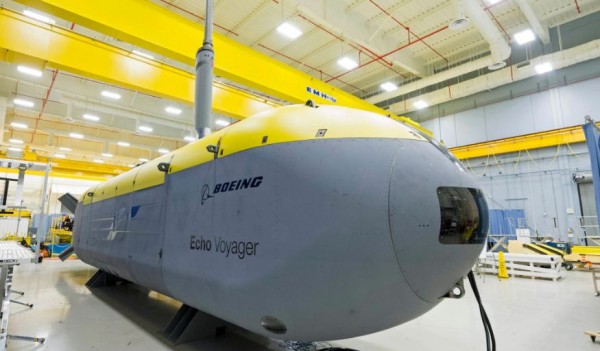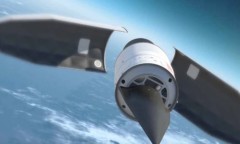By Arthur Dominic J. Villasanta , | March 17, 2017

Boeing's unmanned underwater vehicle.
The U.S. Navy has reached the conclusion that effectively countering Russia and China's Command, Control, Communications, Computers, Intelligence, Surveillance and Reconnaissance (C4ISR) capabilities is essential in ensuring its victory in the naval battles of the future.
This counter-C4ISR capability will allow the U.S. Navy to fire first, and the side that fires its precision weapons first will almost always win the more lethal naval battles of the future. The key to achieving these requisites for naval victory is to invest in C4ISR technologies that allow the navy and the other armed services to target faster, and to stop the enemy from doing so at all.
Like Us on Facebook
"Naval weapons have gotten so long-range, so precise and so lethal that, in hundreds of studies (N81 runs) here at the Navy, what really comes out strongly is that it's the battle of the first salvo," said Charles Werchado, deputy director of the Navy's Assessment Division (OPNAV N81B), to the House Armed Services Seapower and Projection Forces Subcommittee.
"Naval forces, by their nature, are mobile, and therefore they have to be targeted to be hit. And so whichever side completes that targeting kill chain first and fires first, almost always wins.
"So I would make my investments in counter-C4ISR. Where is our decoy ship? Where is our electronic warfare to create false targets?
"Let's make us hard to find, while we make ourselves more capable of finding them. I think if we make investments in counter-C4ISR, they're going to be higher-payoff first."
Werchado is adamant the Navy must spend more to enhance its own targeting chain.
He noted the Navy has lots of cruise missiles and lots of Vertical Launching System cells on its warships "but we need to be able to complete the targeting chain effectively."
The Navy also has to invest in unmanned vehicles, whether aerial, sea surface or underwater, that will be armed with counter-C4ISR systems.
The naval platforms for these counter-C4ISR systems will be Extra Large Unmanned Undersea Vehicles (XLUUVs); new large Unmanned Surface Vehicles; the Common Unmanned Surface Vehicle and also the Extra Large Unmanned Surface Vehicle.
These platforms will carry the sensor packages, jammers and decoys the Navy needs to deploy to keep them operational in highly contested environments.
The Navy sees XLUUV as a modular, open architecture system that can be reconfigured with different payloads. The vehicle will be able to be launched from a dock without needing to be carried aboard a host ship.
-
Use of Coronavirus Pandemic Drones Raises Privacy Concerns: Drones Spread Fear, Local Officials Say

-
Coronavirus Hampers The Delivery Of Lockheed Martin F-35 Stealth Fighters For 2020

-
Instagram Speeds Up Plans to Add Account Memorialization Feature Due to COVID-19 Deaths

-
NASA: Perseverance Plans to Bring 'Mars Rock' to Earth in 2031

-
600 Dead And 3,000 In The Hospital as Iranians Believed Drinking High-Concentrations of Alcohol Can Cure The Coronavirus

-
600 Dead And 3,000 In The Hospital as Iranians Believed Drinking High-Concentrations of Alcohol Can Cure The Coronavirus

-
COVID-19: Doctors, Nurses Use Virtual Reality to Learn New Skills in Treating Coronavirus Patients










